6 Tools SLPs Might Not Know About (But Should!)
As a communication and language professional, you know that early screening, assessment, and intervention play a critical role in promoting positive outcomes for all students. But which tools are the right fit for your screening and assessment needs? We’ve answered that question with an at-a-glance breakdown of six tools indispensable to the work of speech and language specialists like you. You may already be familiar with some of them, and a few might be new to you, but each has been created by experts to help you strengthen the communication skills of all learners as they work toward realizing their best possible future.
1. TILLS
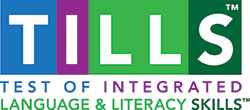
Need to accurately assess oral and written language skills in students ages 6–18 years? The Test of Integrated Language and Literacy Skills™ (TILLS™) is the tool professionals trust to assess students and diagnose disorders.
What TILLS does
- Builds a complete picture of a student’s oral and written language skills
- Identifies and diagnoses language and literacy disorders—including dyslexia
- Documents patterns of relative strengths and weaknesses
- Tracks changes in language and literacy skills over time
Why use TILLS?
For an inside look at TILLS, download this free sampler.
- Backed by comprehensive data. Each of the 15 TILLS subtests was refined using data gathered from numerous pilot studies and field trials, a national beta trial, and a standardization study with 1200 children and adolescents across the U.S.
- Curriculum relevant. TILLS measures integrated language-literacy abilities that reflect the complex demands of the general education curriculum.
- Strong specificity and sensitivity. Diagnostic accuracy data are broken down in the TILLS manual into nine different age bands. Sensitivity ranges from 81% to 97%, and specificity from 81% to 100%.
- Useful for a wide range of students. TILLS is ideal for evaluating students who are suspected of having a primary language impairment, learning disability, reading disability, or dyslexia, or known to have an existing condition associated with difficulties in spoken and written language, such as autism spectrum disorder or intellectual disability.
Who completes TILLS?
TILLS can be administered by speech language pathologists, special educators, reading specialists, learning disability specialists, neuropsychologists, educational psychologists, and other educational specialists trained in individualized test administration.
Age range
6–18
Time commitment
All 15 subtests can be completed in one 70- to 90-minute session or two 45-minute sessions. If shorter sessions are needed, they should be completed in no more than 4 weeks.
What users say
“TILLS is the most comprehensive assessment I’ve used in the 20 years I’ve been a school-based speech-language pathologist.” —Sue Torney, M.A., CCC-SLP, Speech-Language Pathologist
2. SLS
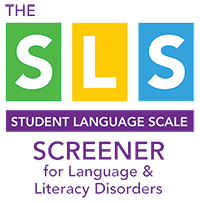
Used on its own or in conjunction with TILLS, the Student Language Screener (SLS) quickly and accurately screens students ages 6–18 for language and literacy disorders, including dyslexia. If the SLS results indicate concern in a particular area, simply follow up with a TILLS assessment!
What the SLS does
- Gathers ratings from parents and teachers to screen for multiple language/literacy disorders
- Builds a reliable profile of a student’s strengths and needs by compiling information
from multiple sources - Improves home-school communication by integrating parent, teacher, and student perspectives on the student’s academic performance
Why use the SLS?
Learn more about the Student Language Screener (SLS).
- Expert-developed. The SLS developers are highly respected for their work in the field of language and literacy assessment.
- Quick and easy. The SLS can be completed in three minutes or less, and scoring requires only a pencil and paper!
- Strong sensitivity and specificity. Sensitivity of the SLS to risk of language/literacy disorder is .90 for teachers and .85 for parents, and specificity (correct identification of typical learners) is .90 for teachers and .83 for parents.
- Cost effective. The SLS provides results you can trust at a lower cost than comparable screening tools.
Who completes the SLS?
The SLS is completed by parents, teachers, and students.
Age range
6–18
Time commitment
Three minutes or less
What users say
“As an enthusiastic user of the TILLS, I am very happy to have the SLS as an additional tool in my arsenal. The SLS offers an even stronger view of the student’s profile of strengths and needs with a clear and manageable rating scale that can easily be incorporated into assessment with TILLS.” —Beverly Barkon, Carlow University
3. BESA
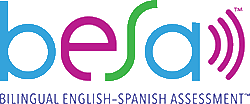
The Bilingual English-Spanish Assessment™ (BESA™) is specifically designed to determine whether a young bilingual child’s language difficulties are due to a disorder or limited exposure to English.
What BESA does
- Identifies phonological and/or language impairment in English-Spanish bilingual children
- Pinpoints the difference between delays in English language acquisition and a true language disorder
- Highlights both strengths and needs in a bilingual child’s speech and language development
- Monitors child progress and helps inform intervention decisions
Why use BESA?
Learn more about the Bilingual English-Spanish Assessment (BESA).
- Valid and reliable. BESA fills the void for a reliable and accurate language assessment of bilingual children.
- Culturally and linguistically appropriate. The BESA Spanish subtest is not just an English translation; it was uniquely created using culturally relevant items. The norming sample features 17 Spanish dialects and 7 regional dialects for English.
- Provides a full picture of a child’s development. In addition to identifying any language impairments, BESA provides invaluable data on a child’s developmental progress in both languages across several domains, which can help you make the best intervention decisions.
- Flexible and convenient. The BESA components can be used together or independently, and may also be completed over multiple sessions, making them an easy fit for any schedule.
Who completes BESA?
BESA is administered by an SLP. If the SLP isn’t a bilingual English-Spanish speaker, a trained bilingual person should administer the Spanish portions under the supervision of the SLP.
Age range
4–6
Time commitment
1 to 2 hours
What users say
“I highly recommend the BESA to any speech language pathologist who works with bilingual populations. The BESA is the one assessment that I trust to help me make better clinical decisions regarding my bilingual clients’ presence of a communication disorder.” —Ms. Xigrid Soto
4. DEMSS
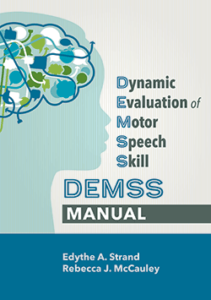
The Dynamic Evaluation of Motor Speech Skill (DEMSS) is a new assessment tool designed to help with differential diagnosis of speech sound disorders in children with severely impaired speech.
What DEMSS does
- Diagnoses severe speech sound disorders in children 3 and older
- Facilitates, confirms, or rules out a diagnosis of Childhood Apraxia of Speech (CAS)
- Estimates the severity and prognosis of a child’s disorder
- Informs the development of treatment goals
- Helps make decisions about the most effective cueing methods during treatment
Why use DEMSS?
Get an inside look at DEMSS with this free excerpt from the manual.
- Reliable and expert-developed. Developed by one of the leading experts on CAS and an authority on test development, DEMSS is efficient and reliable.
- Comprehensive guidance. You’ll get a video tutorial that not only provides an overview of DEMSS, but also walks you through two administrations of the tool with two different patients, one with mild CAS and one with more severe CAS.
- Everything you need in one manual. The DEMSS manual includes a keycode that unlocks access to the video tutorial and free unlimited DEMSS forms, downloadable online.
Who completes DEMSS?
Administered by an SLP in a clinical setting
Age range
3 and up
Time commitment
About 30 minutes or less
What users say
“DEMSS is an assessment tool that is a ‘must have’ in the toolbox of every clinician and researcher who works with children with CAS! There’s no other standardized test that combines a comprehensive assessment across a number of parameters associated with CAS, that’s based on a strong theoretical framework, and has both test validity and reliability. I recommend it highly!” —A. Lynn Williams, Associate Dean and Professor at East Tennessee State University
5. QUILS

The Quick Interactive Language Screener™ (QUILS™) is a one-of-a-kind tool with a fun, game-like interface that quickly assesses whether young children are making language progress appropriate for their age group. QUILS:ES, designed specifically to assess the language development of bilingual English-Spanish speaking children, will be available soon.
What QUILS does
QUILS reliably screens three key areas of language development:
- Vocabulary. This area examines the child’s word knowledge. Do they know the words they hear on QUILS?
- Syntax. This section looks at how words go together in sentences. For example, does the child understand questions that begin with where, when, and how?
- Process. The third area looks at skill in learning new words and grammar structures. How proficient is the child at learning new language items?
Why use QUILS?
See QUILS in action—watch a free demo!
- Dependable. QUILS is based on the most current research in language acquisition, and every item was created and tested by a team of experts in language development. Psychometric studies have established QUILS’ reliability and validity, and ensured that all items are culturally neutral.
- Convenient and time-saving. Scores and reports are automatically generated, saving you time. You’ll get standard scores and percentile ranks by age level, plus cut score guidance for follow-up recommendations, displayed in simple reports to share with families.
- No training required. You don’t need any prior screening experience to administer QUILS.
- Accurate results every time. Since QUILS is automated, it’s delivered the same way to each child, ensuring reliable results every time.
- Kids love it. Children instantly respond to the game-like interactive interface and cute cartoon illustrations – they’ll have so much fun they may ask to do it again!
Who completes QUILS?
The child, with minimal supervision from a teacher, paraprofessional, classroom aide, parent, or other classroom volunteer
Age range
3–5
Time commitment
Approximately 15–20 minutes
What users say
“Groundbreaking…a dynamic measure that can show relationships and sequences over time in a way static pictures cannot. And the illustrations are great (most inclusive and racially diverse I’ve seen).” —Lesley Quinn, Communicare, LLC
6. WELL SCREENING
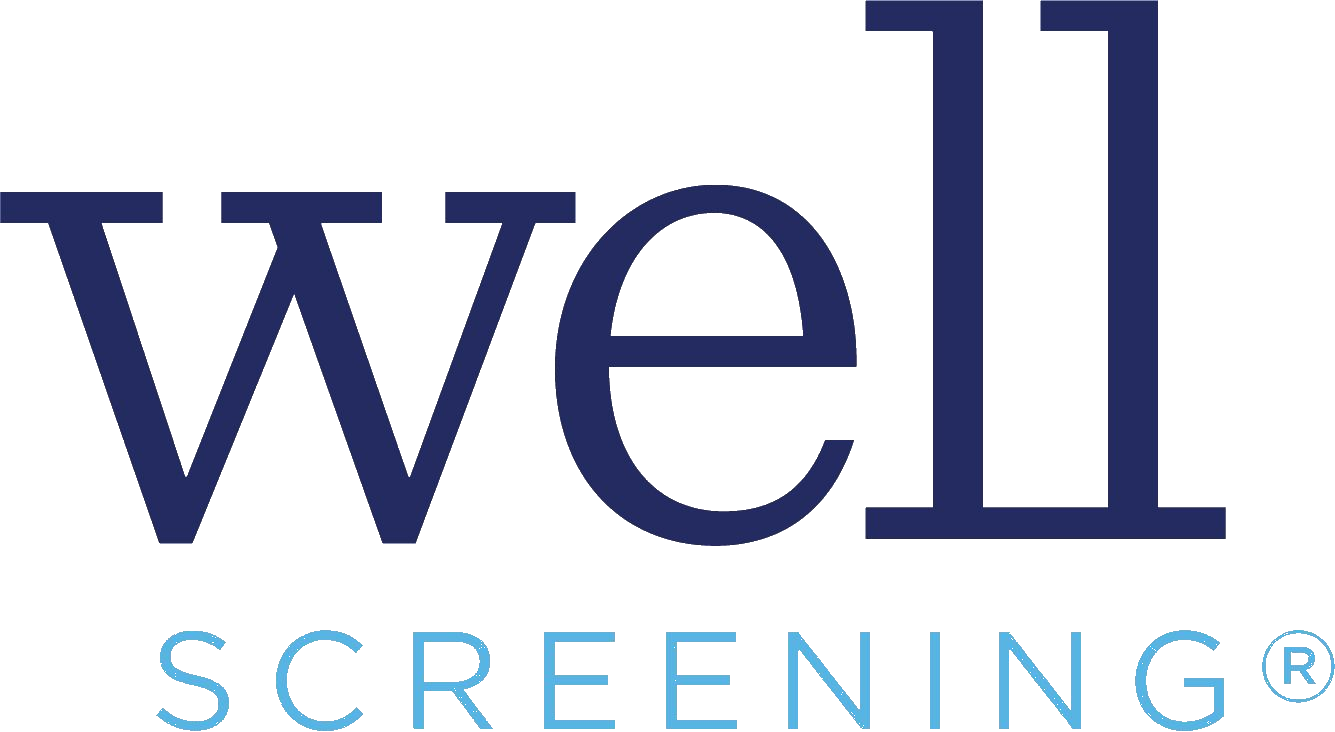
The Well Screening® tool is your quick, reliable, and comprehensive way to identify kindergarten students (ages 4–6) who are at risk for learning disabilities, including developmental language disorders, dyslexia, attention-deficit/hyperactivity disorder (ADHD), dyscalculia, and speech sound disorders.
What Well Screening does
With just one 20-minute screener, speech-language pathologists (SLPs), special and general educators, and school psychologists can examine student performance in multiple skill areas that predict their future success in school.
Get a complete introduction to the Well Screening tool with this free toolkit.
- Identifies at-risk students early, so that further evaluation and intervention can be provided as soon as possible.
- Covers areas missed by other screeners—looks at many domains that research identifies as important for school success.
- Pinpoints specific strengths and weaknesses in areas that matter most for academic success.
Why use Well Screening?
- Fun and engaging, with animated characters that kids love to interact with.
- Easy for adults to administer and score.
- Digital-only format that can also be delivered via Zoom or another video interface.
- Backed by more than 30 years of clinical experience and drawn from multiple specialized fields: speech-language pathology, education, psychology, and child development.
- Great for monitoring— can be used to follow the child’s progress in the fall, winter, and spring of the kindergarten year
Who completes Well Screening?
The child, with supervision from any educator or professional in a school or clinical setting
Age range
4:5 to 6:11
Time commitment
Approximately 20 minutes
What users say
“The Well Screening platform truly takes online screening for suspected speech, language, and learning disabilities to a new level. Its state of art technology and animations makes evaluating skills critical for future academic success fun and engaging.” —Stacy Williams, Ph.D., CHSE, ASHA Fellow, Professor and Simulation Education Expert

